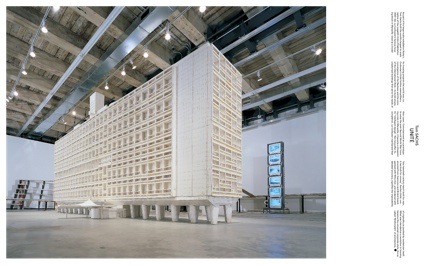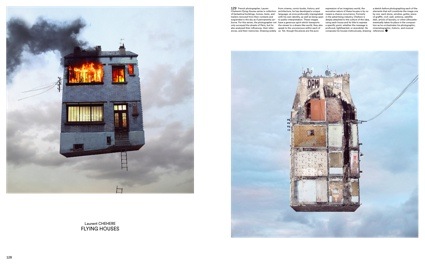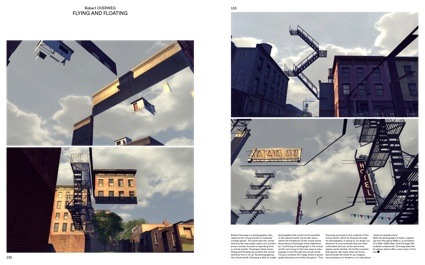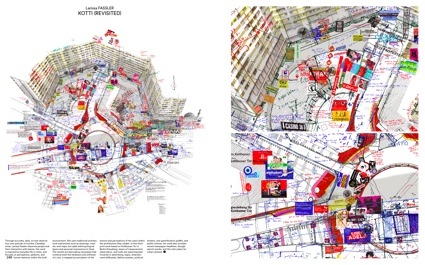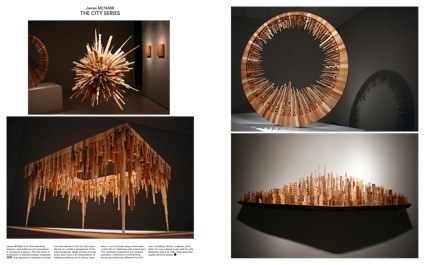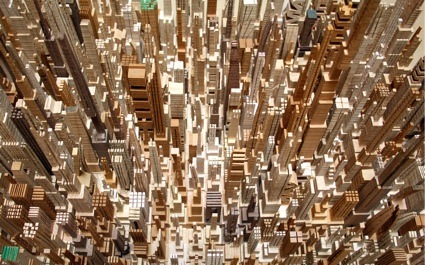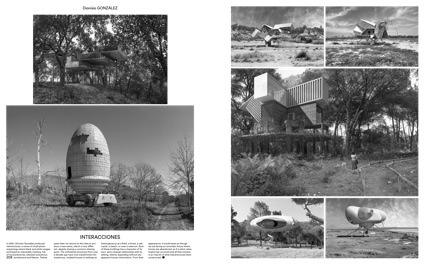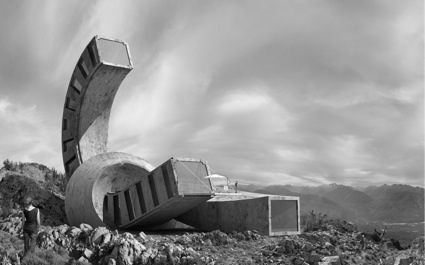Imagine Architecture. Artistic Visions of the Urban Realm, by Lukas Feireiss and Robert Klanten.
Available on amazon UK and USA
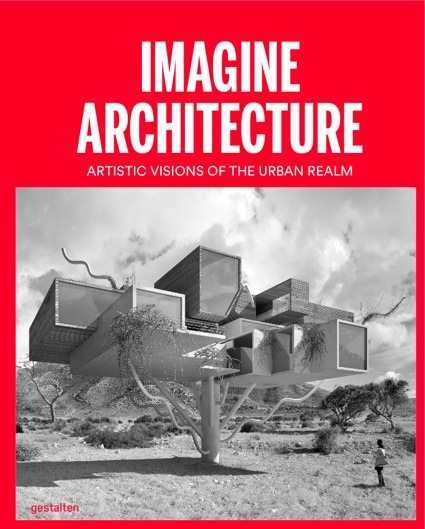
Publisher Gestalten writes: Contemporary developments in the visual arts are often reflected in urban landscapes. Imagine Architecture explores the ways in which visual culture develops in public spaces and how it shapes those spaces. This book focuses on the fruitful exchange between visual culture and architecture and follows up on the themes introduced in our previous release Beyond Architecture. It compiles experimental projects and creative perspectives from the fields of illustration, painting, collage, sculpture, photography, installation, and design.
A young generation of creatives sees the urban landscape as the starting point for their work. When these illustrators, sculptors, or photographers engage with architecture, their art overrules conventional doctrines on the use of space. They use buildings as a medium for their ideas, breaking norms and triggering new tensions. Whether they make sculptures that are created within the context of a given structure or street art whose forms and colors impact its surrounding architecture, all of the featured projects interpret and reflect their spatial settings in compelling ways. In the process, these visionary concepts are playfully expanding the definition of architecture. Their creativity has the potential to breathe new life into public spaces and promote the evolution of our cities.
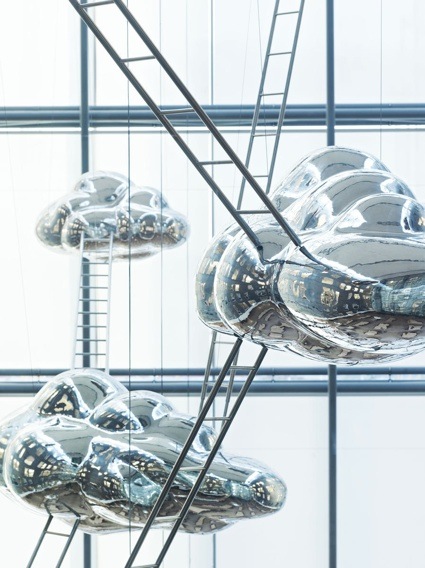 Fredrik Raddum, Climbing the Clouds, Skatt-Øst, Oslo, 2009
Fredrik Raddum, Climbing the Clouds, Skatt-Øst, Oslo, 2009
Imagine Architecture follows Gestalten magical recipe: a theme which will catch everyone’s imagination, a straightforward introduction, a brief description of each work and lots of very big images. The formula works every time.
It’s not my favourite book from Gestalten though. It’s still a brilliant one but i opened it with the assumption that artists exploring architecture were always going to be far more thought-provoking than architects expressing the radical or outlandish ideas you’d expect from an artist. I looked back at architecture titles i’ve reviewed in the past (in particular the two i’ve just linked to) and realize that i was wrong, i shouldn’t dismiss architects’ creativity.
Now to what i like about the book: the title and content might be catchy but that doesn’t reduce the Imagine Architecture to a catalogue of what was cool and trendy on design and art blogs these past couple of years. The editors have brought to light gems from exhibitions and portfolios that haven’t reached the mainstream yet. Some of the works are deeply political. Others have no other ambition than be poetical. Some are paper models of an imaginary city that, like a real one, is ever growing, ever-evolving. Others are typographic experiments that attempt to dialogue with architecture. Some explore architecture through the introspective lens of the home. Others look at the arrogance of men who hope to control and dominate from the height of the towers they’ve built.
Right, i can see now that my arid review hasn’t probably done justice to the book, let the images speak then:
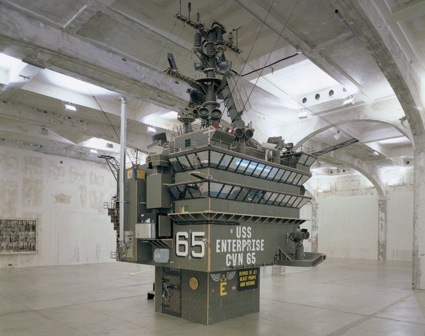 Tom Sachs, The Island
Tom Sachs, The Island
Tom Sachs’ The Island is a modified model of the radar tower of the USS Enterprise CVN-65, “The world’s first and finest nuclear powered aircraft carrier.” It’s also one of my favourite works ever.
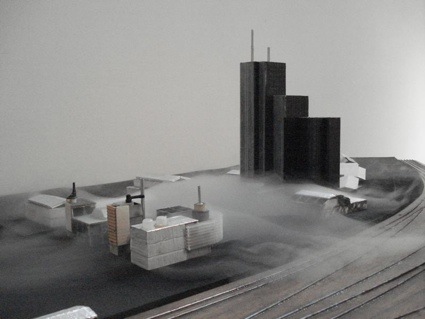 Bertrand Lamarche, The Fog Factory, 2005-2011
Bertrand Lamarche, The Fog Factory, 2005-2011
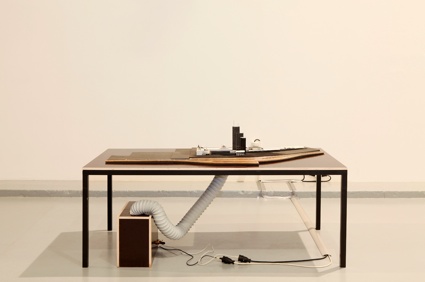 Bertrand Lamarche, The Fog Factory, 2005-2011
Bertrand Lamarche, The Fog Factory, 2005-2011
The Fog Factory is the model of the area around the train station in Nancy, France. Fog, which creeps over the streets, constitutes the architecture, an artificial copy of a meteorological phenomenon, mechanically produced but randomly distributed and imponderable.
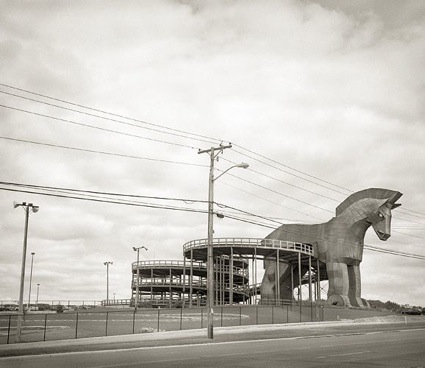 Beth Dow, Ruins
Beth Dow, Ruins
Beth Dow looks at the American environments, and its penchant for fake antiquities. My pictures of faked antiquities are an attempt to evoke nostalgia for inaccurate history, to wrestle with ideas of authenticity, and to question the value we place on classical ideals.
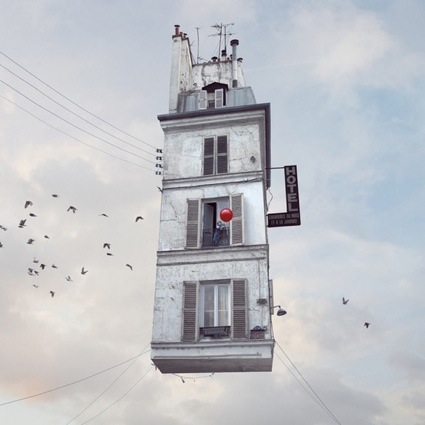
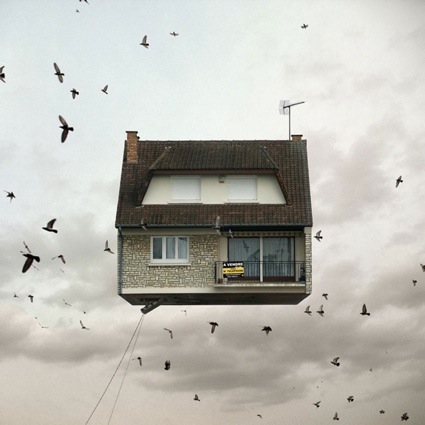 Laurent Chechere, Flying Houses
Laurent Chechere, Flying Houses
Laurent Chehere looks for understated and overlooked examples of architecture in Paris. From caravans to circus tents to sex shops. He photographs them and then sends them high up in the air from his digital manipulation room.
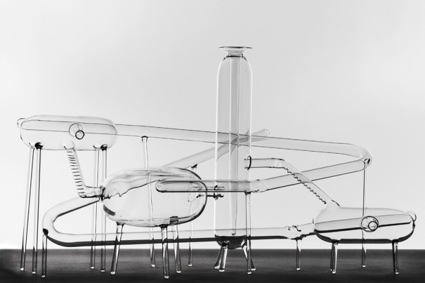 El Ultimo Grito, Mine Schaft, from the series Collapscapes
El Ultimo Grito, Mine Schaft, from the series Collapscapes
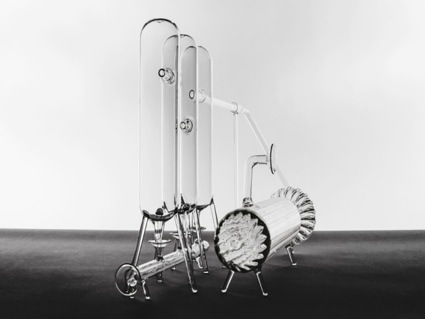 El Ultimo Grito, Chemical Plant, from the series Collapscapes
El Ultimo Grito, Chemical Plant, from the series Collapscapes
Collapscapes are fictitious industrial spaces made of glass. Called Chemical Plant, Mine Shaft, Super Collider and Gas Depot, the objects look at industrial architecture and the contraction (or collapse) of industrial sites that follows increasingly mechanised production.
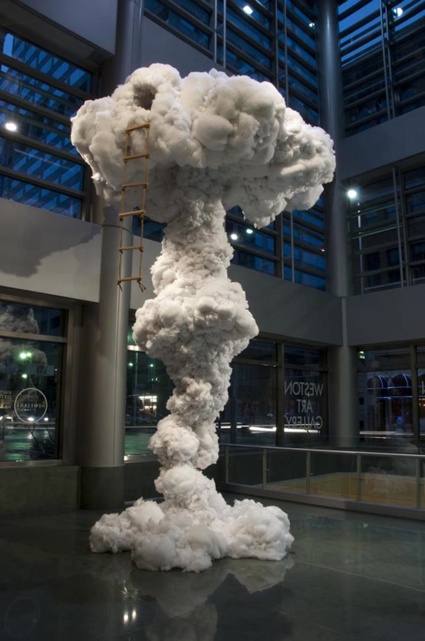 Dietrich Wegner, Playhouse
Dietrich Wegner, Playhouse
A synthetic cotton treehouse for children in the shape of a mushroom cloud.
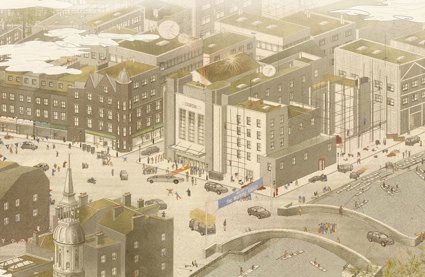 Darryl Chen, New [Socialist] Village, 2013
Darryl Chen, New [Socialist] Village, 2013
Daryl Chen’s New Socialist Village explores what the UK can learn about planning from the community living in the village of Caochangdi, an atypical ‘new socialist village’ outside of Beijing. In the space created by the Chinese government’s evolving planning laws, the village’s growth is driven by the instincts of local peasants and the bohemian opportunism of artists who have established a set of unstated rules governing urban form.
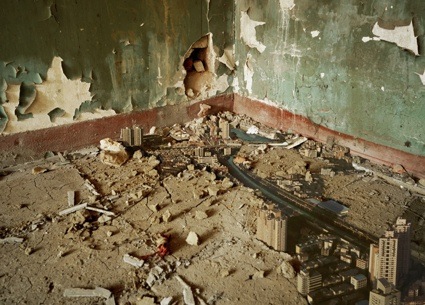
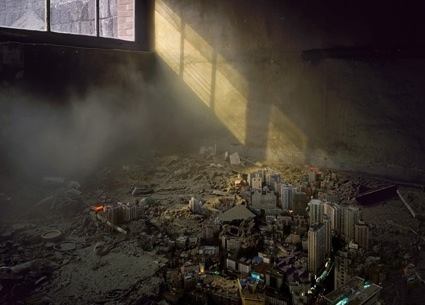 Jiang Pengyi, Unregistered Cities
Jiang Pengyi, Unregistered Cities
Jiang Pengyi creates Unregistered Cities, miniature abandoned cities. He then places them in the historic abandoned houses that Beijing’s hunger for “excessive urbanization, redevelopment and demolition” has left to rot.
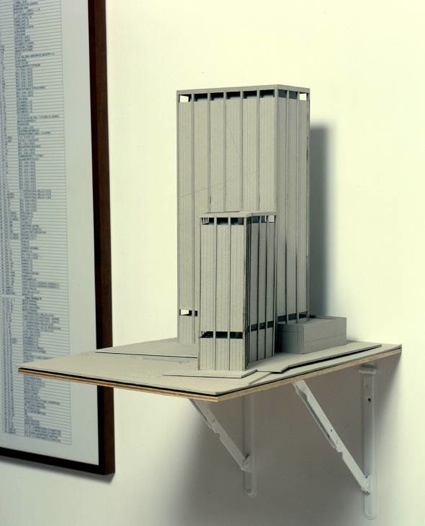 Vangelis Vlahos, Athens Tower (Tenants Lists 1974-2004), 2004
Vangelis Vlahos, Athens Tower (Tenants Lists 1974-2004), 2004
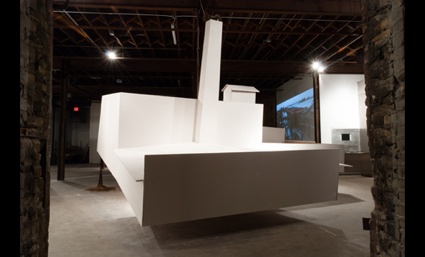
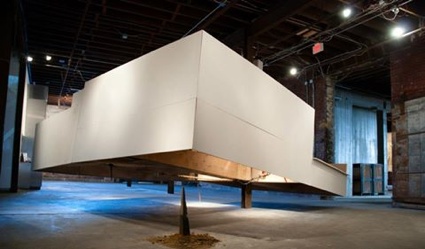 Judith Hoffman, The Soap Factory.
Judith Hoffman, The Soap Factory.
Views inside the book:
